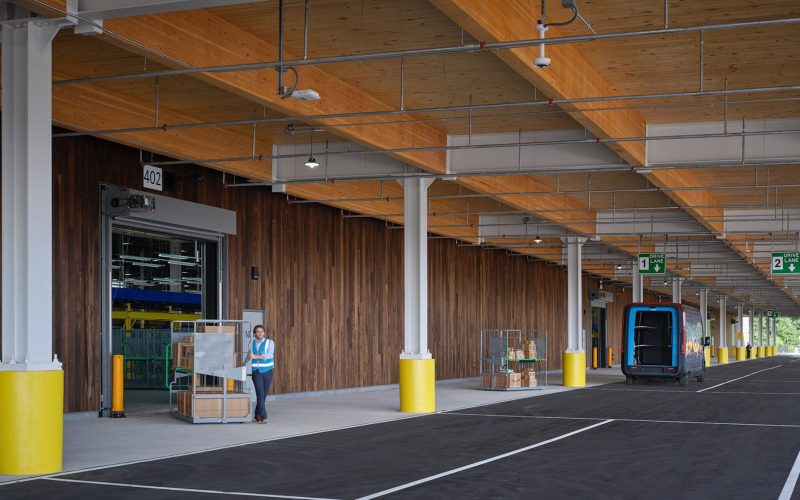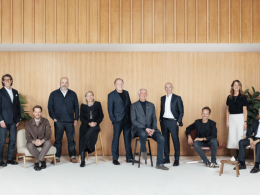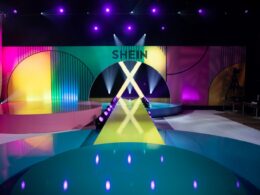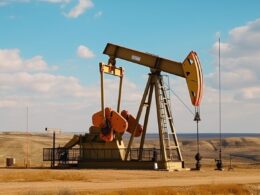Amazon has completed a mass timber warehouse in Elkhart, Indiana, which it describes as a testing ground for more than 40 sustainability strategies aimed at shaping the design and operation of its future buildings.
Named DII5, the warehouse is the first large-scale owner-occupied mass timber logistics facility in the United States. Designed by ZGF Architects, the building features clerestory windows, circadian lighting, electric vehicle charging stations and other elements intended to reduce its environmental footprint. The project seeks to achieve Living Future’s Zero Carbon Certification.
“By testing several sustainability initiatives under one roof, we’re accelerating our progress toward achieving scalability and standardisation of these initiatives across our building portfolio,” said Daniel Mallory, Amazon’s vice president of global realty. “At the same time, it serves as a ‘test and learn’ platform for Amazon and the broader industry to explore how buildings can become more adaptive, high-performing, and resilient in a changing climate.”
The site includes permeable paving, low-carbon concrete, high-efficiency lighting and a bio-retention pond for stormwater management. The building itself uses Southern Yellow Pine cross-laminated timber (CLT) panels, glulam beams, and wood fibre insulation to minimise embodied carbon.
Amazon said it will monitor the warehouse’s performance across multiple metrics — including embodied carbon reductions, energy efficiency, water conservation and biodiversity impact — to determine which innovations can be scaled across its portfolio.
The company has previously used mass timber in other projects, including its HQ2 development in Arlington, Virginia, and claims several of its international facilities, such as those in Australia and the UK, have already achieved Zero Carbon Certification.
However, Amazon’s broader sustainability record has faced scrutiny. Reports in 2024 indicated the company’s greenhouse gas emissions rose by six per cent, and critics have questioned its reliance on renewable energy certificates to meet green energy targets.
Construction of phase two of Amazon’s HQ2 project, which drew controversy over its proposed “Helix” design, remains on hold.





















